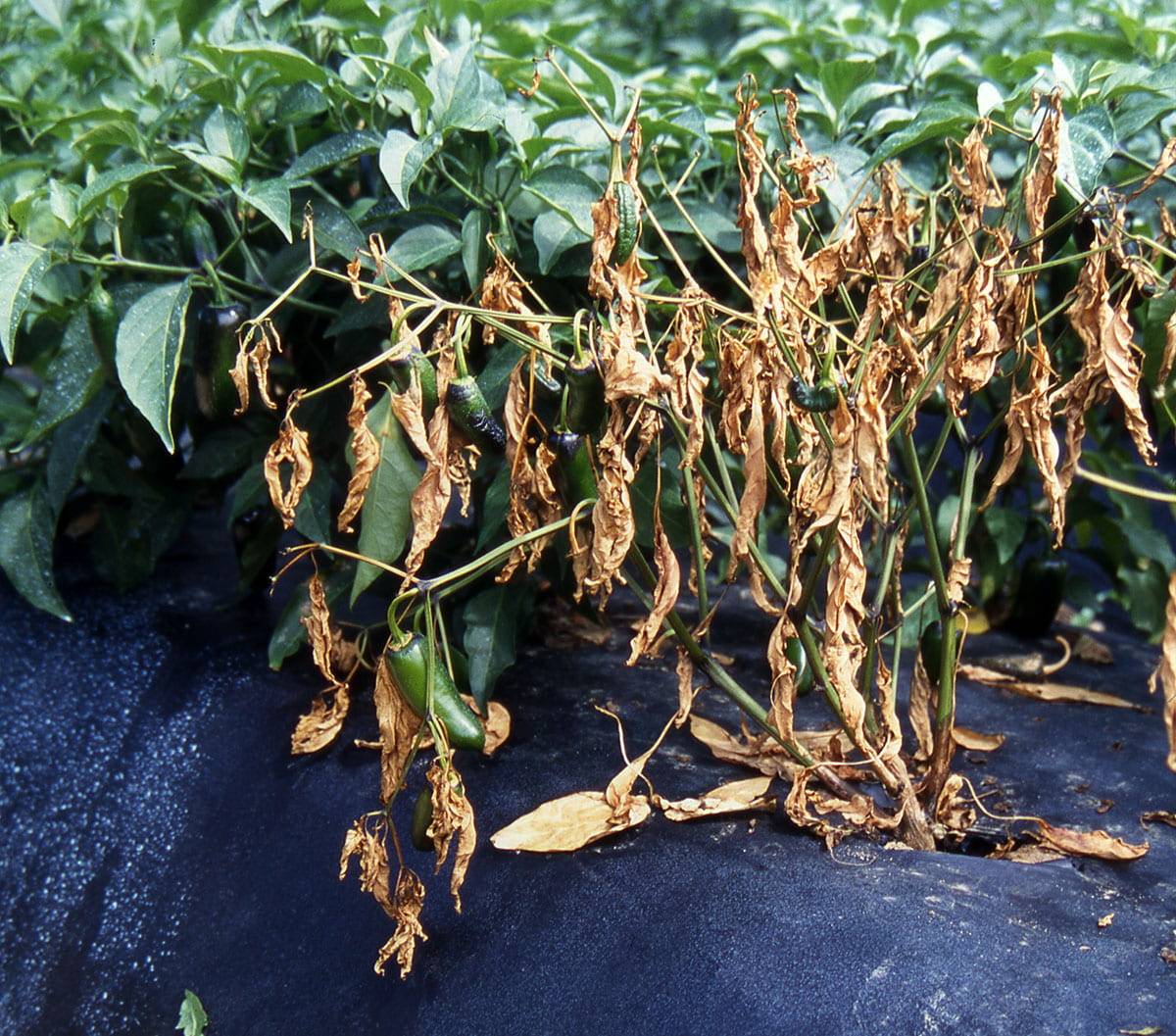Chilli
Phytopthora Blight

Phytopthora Capsici
Fungal Disease

Phytopthora Capsici
Fungal Disease

Phytopthora Capsici
Fungal Disease
Introduction
Phytophthora blight in peppers is caused by the oomycete plant pathogen Phytophthora capsici. This destructive disease can affect various parts of the plant and lead to significant crop losses. The pathogen reproduces both sexually and asexually, causing multiple infections within a single growing season.
Key Aspects of Phytophthora Blight:
1. Pathogen and Reproduction:
-
P. capsici reproduces rapidly under warm and wet conditions.
-
Asexual reproduction produces millions of short-lived spores on infected plants.
-
Spores can spread via splashing water, moving water in fields, and leaf-to-soil contact.
-
Each spore releases 20-40 motile spores that swim towards plant roots.
-
Thick-walled spores survive for years in the soil, ensuring long-term persistence.
2. Symptoms:
-
Crown Rot: Symptoms often begin at the soil line in roots and the crown.
-
Wilting and Plant Death: Initial wilting progresses to plant death as lesions girdle the stem.
-
Fruit Rot: Appears as water-soaked areas on pepper fruits, covered with white, cottony mold under humid conditions.
-
Infection can occur when rain or irrigation splashes infested soil onto emerging fruits.
3. Spread and Survival:
-
Spores can be splashed between plants, carried by water, or spread through contaminated soil.
-
Survival spores (oospores) remain dormant in soil for years until a susceptible crop is planted.
-
Once present in soil, the pathogen is nearly impossible to eradicate.
4. Alternate Hosts:
-
Affects multiple crops including eggplant (brinjal), capsicum, tomato, beans, cucumber, and pumpkin.
5. Favorable Conditions:
Temperature:
-
Optimal range: 7°C to 37°C, with 30°C being ideal.
-
Cooler temperatures limit disease spread.
Humidity:
-
High humidity (>90%) promotes infection and rapid disease progression.
-
Free water or atmospheric moisture significantly influences pathogen activity.
6. Disease Progression:
-
High temperatures combined with elevated humidity lead to rapid disease spread.
-
Disease progression is faster under wet and humid conditions.
Conclusion: Phytophthora blight is a persistent and challenging disease for pepper growers. Understanding its symptoms, favorable conditions, and survival mechanisms is crucial for implementing effective management strategies to minimize crop losses.
Ref: NC State University. Image Source- https://edis.ifas.ufl.edu/publication/VH045




